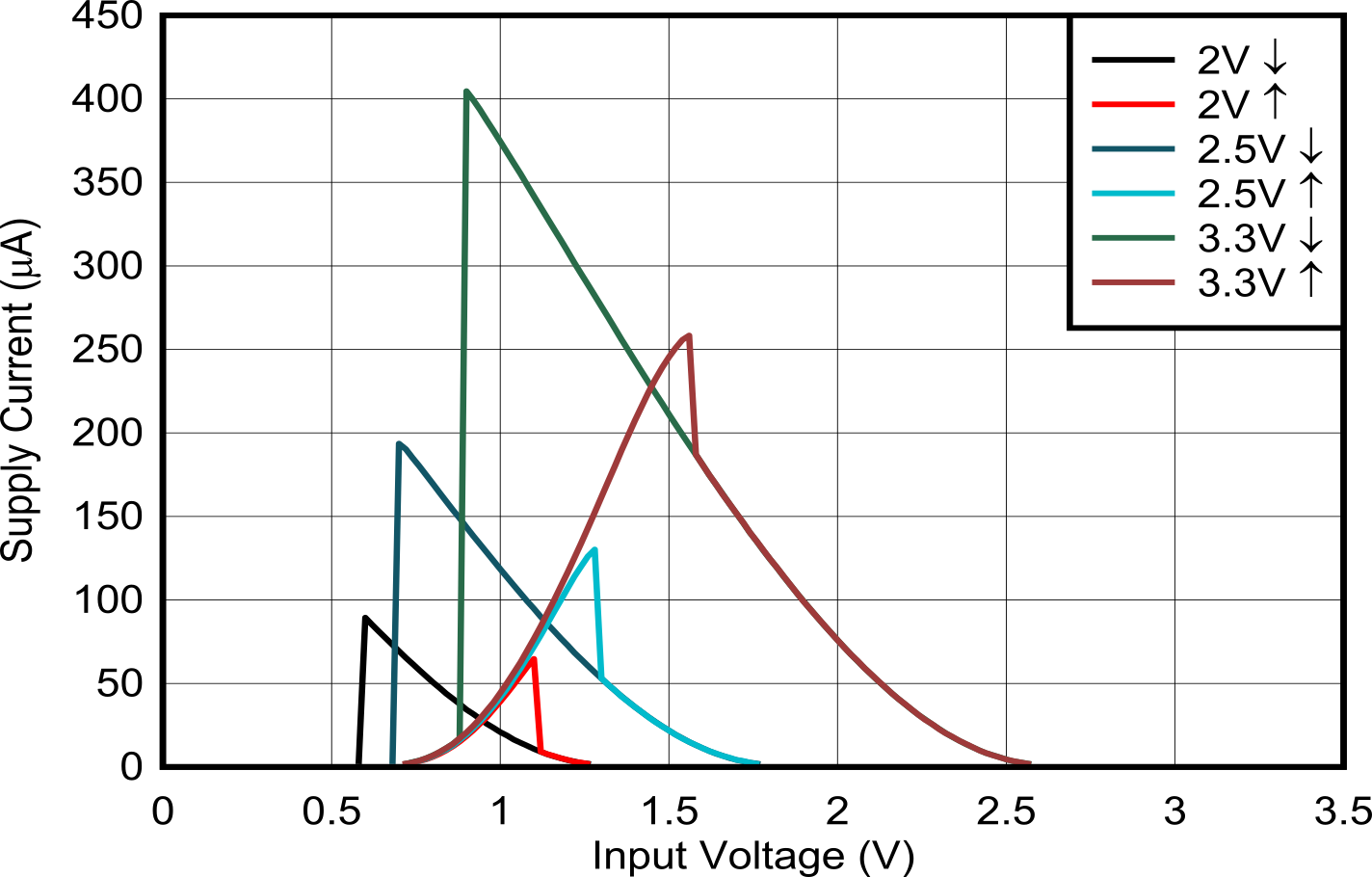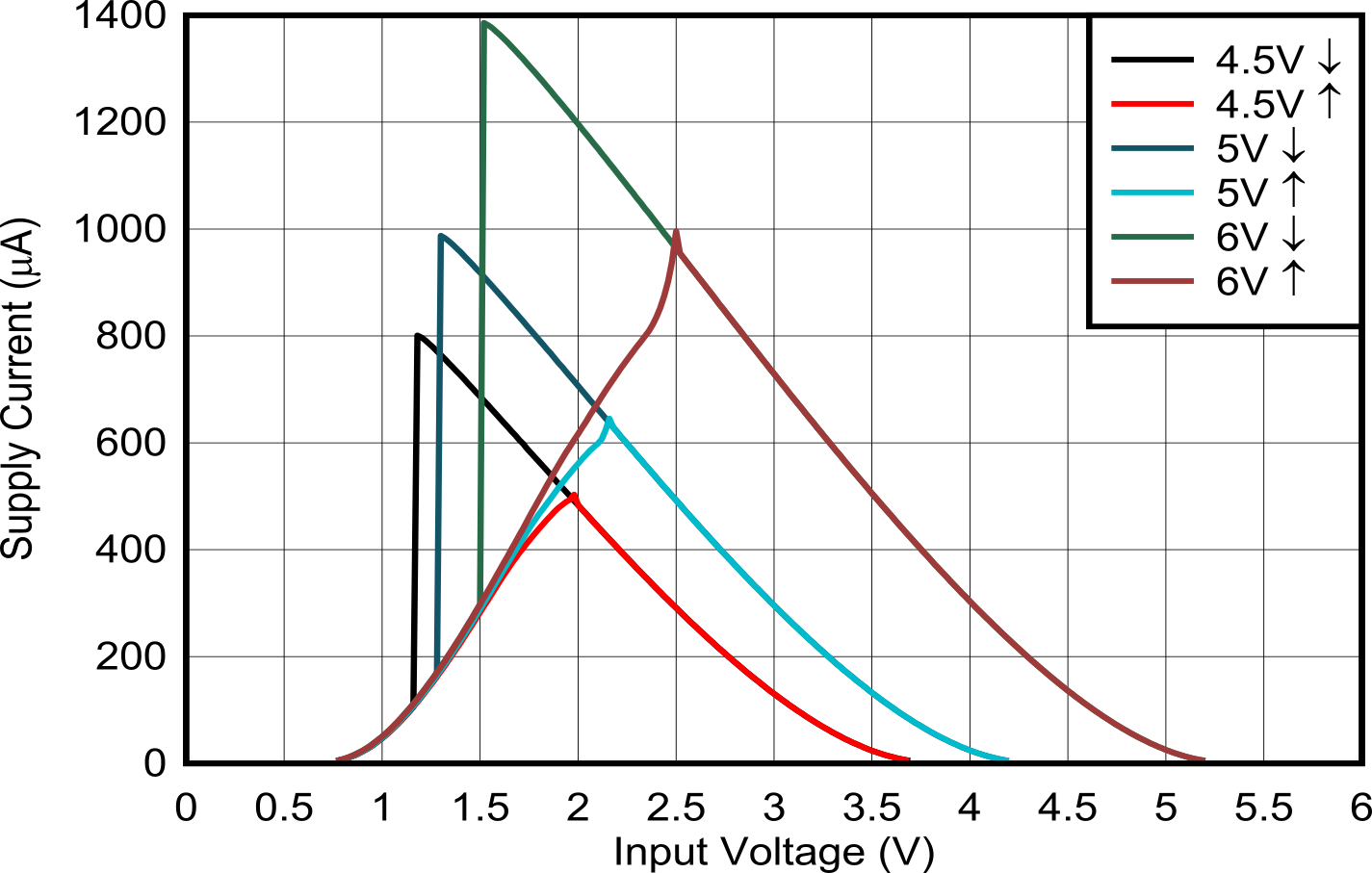SCAS962B November 2023 – September 2024 SN74AC8541
PRODUCTION DATA
- 1
- 1 Features
- 2 Applications
- 3 Description
- 4 Pin Configuration and Functions
- 5 Specifications
- 6 Detailed Description
- 7 Application and Implementation
- 8 Device and Documentation Support
- 9 Revision History
- 10Mechanical, Packaging, and Orderable Information
Package Options
Refer to the PDF data sheet for device specific package drawings
Mechanical Data (Package|Pins)
- RKS|20
- DGS|20
- PW|20
Thermal pad, mechanical data (Package|Pins)
- RKS|20
Orderable Information
5.7 Typical Characteristics
TA = 25°C (unless otherwise noted)
 Figure 5-1 Supply Current Across Input Voltage 1.8V and 2.5V Supply
Figure 5-1 Supply Current Across Input Voltage 1.8V and 2.5V Supply Figure 5-3 Supply Current Across Supply Voltage
Figure 5-3 Supply Current Across Supply Voltage Figure 5-5 Output Voltage vs Current in LOW State
Figure 5-5 Output Voltage vs Current in LOW State Figure 5-7 Output Voltage vs Current in LOW State; 5V Supply
Figure 5-7 Output Voltage vs Current in LOW State; 5V Supply Figure 5-9 Output Voltage vs Current in LOW State; 3.3V Supply
Figure 5-9 Output Voltage vs Current in LOW State; 3.3V Supply Figure 5-11 Output Voltage vs Current in LOW State; 2.5V Supply
Figure 5-11 Output Voltage vs Current in LOW State; 2.5V Supply Figure 5-13 Output Voltage vs Current in LOW State; 1.8V Supply
Figure 5-13 Output Voltage vs Current in LOW State; 1.8V Supply Figure 5-2 Supply Current Across Input Voltage 3.3V and 5.0V Supply
Figure 5-2 Supply Current Across Input Voltage 3.3V and 5.0V Supply Figure 5-4 Output Voltage vs Current in HIGH State
Figure 5-4 Output Voltage vs Current in HIGH State Figure 5-6 Output Voltage vs Current in HIGH State; 5V Supply
Figure 5-6 Output Voltage vs Current in HIGH State; 5V Supply Figure 5-8 Output Voltage vs Current in HIGH State; 3.3V Supply
Figure 5-8 Output Voltage vs Current in HIGH State; 3.3V Supply Figure 5-10 Output Voltage vs Current in HIGH State; 2.5V Supply
Figure 5-10 Output Voltage vs Current in HIGH State; 2.5V Supply Figure 5-12 Output Voltage vs Current in HIGH State; 1.8V Supply
Figure 5-12 Output Voltage vs Current in HIGH State; 1.8V Supply